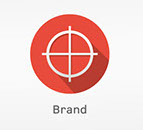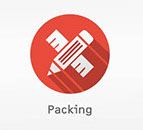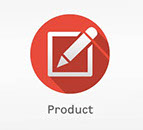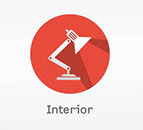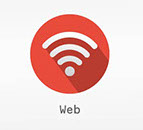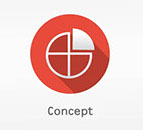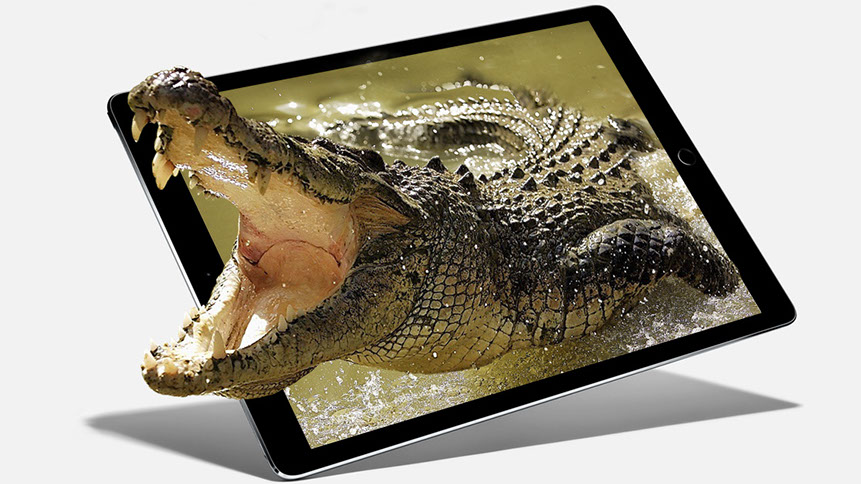
We can do Augmented reality (AR) for you. Here is info about Augmented reality
Augmented reality (AR) is a live direct or indirect view of a physical, real-world environment whose elements are augmented (or supplemented) by computer-generated sensory input such as sound, video, graphics or GPS data. It is related to a more general concept called mediated reality, in which a view of reality is modified (possibly even diminished rather than augmented) by a computer. As a result, the technology functions by enhancing one’s current perception of reality. By contrast, virtual reality replaces the real world with a simulated one. Augmentation is conventionally in real-time and in semantic context with environmental elements, such as sports scores on TV during a match. With the help of advanced AR technology (e.g. adding computer vision and object recognition) the information about the surrounding real world of the user becomes interactive and digitally manipulable. Information about the environment and its objects is overlaid on the real world. This information can be virtua or real, e.g. seeing other real sensed or measured information such as electromagnetic radio waves overlaid in exact alignment with where they actually are in space.
Applications
This section reads like an editorial or opinion piece. Please help improve this section by rewriting it in an encyclopedic style to make it neutral in tone. See WP:No original research and WP:NOTOPINION for further details. (June 2013)
Augmented reality has many applications. First used for military, industrial, and medical applications, it has also been applied to commercial and entertainment areas.
Commerce
AR can enhance product previews such as allowing a customer to view what's inside a product's packaging without opening it. AR can also be used as an aid in selecting products from a catalog or through a kiosk. Scanned images of products can activate views of additional content such as customization options and additional images of the product in its use.AR is used to integrate print and video marketing. Printed marketing material can be designed with certain "trigger" images that, when scanned by an AR enabled device using image recognition, activate a video version of the promotional material. A major difference between Augmented Reality and straight forward image recognition is that you can overlay multiple media at the same time in the view screen, such as social media share buttons, in-page video even audio and 3D objects. Traditional print only publications are using Augmented Reality to connect many different types of media.[
Construction
With the continual improvements to GPS accuracy, businesses are able to use augmented reality to visualize georeferenced models of construction sites, underground structures, cables and pipes using mobile devices.[85] Augmented reality is applied to present new projects, to solve on-site construction challenges, and to enhance promotional materials.[86] Examples include the Daqri Smart Helmet, an Android-powered hard hat used to create augmented reality for the industrial worker, including visual instructions, real time alerts, and 3D mapping.[87]
Following the Christchurch earthquake, the University of Canterbury released, CityViewAR, which enabled city planners and engineers to visualize buildings that were destroyed in the earthquake.[88] Not only did this provide planners with tools to reference the previous cityscape, but it also served as a reminder to the magnitude of the devastation caused, as entire buildings were demolished.
Education
App iWow, A mobile device based augmented reality enhanced world globe
Augmented reality applications can complement a standard curriculum. Text, graphics, video and audio can be superimposed into a student’s real time environment. Textbooks, flashcards and other educational reading material can contain embedded “markers” that, when scanned by an AR device, produce supplementary information to the student rendered in a multimedia format.[89][90][91] Students can participate interactively with computer generated simulations of historical events, exploring and learning details of each significant area of the event site.[92] On higher education, there are some applications that can be used. For instance, Construct3D, a Studierstube system, allows students to learn mechanical engineering concepts, math or geometry. This is an active learning process in which students learn to learn with technology.[93] AR can aid students in understanding chemistry by allowing them to visualize the spatial structure of a molecule and interact with a virtual model of it that appears, in a camera image, positioned at a marker held in their hand.[94] It can also enable students of physiology to visualize different systems of the human body in three dimensions.[95] Augmented reality technology also permits learning via remote collaboration, in which students and instructors not at the same physical location can share a common virtual learning environment populated by virtual objects and learning materials and interact with another within that setting [5].[96]
This resource could also be of advantage in Primary School. Children can learn through experiences, and visuals can be used to help them learn. For instance, they can learn new knowledge about astronomy, which can be difficult to understand, and children might better understand the solar system when using AR devices and being able to see it in 3D. Further, learners could change the illustrations in their science books by using this resource.
For teaching anatomy, teachers could visualize bones and organs using augmented reality to display them on the body of a person.[citation needed]
Mobile apps using augmented reality are emerging in the classroom. The mix of real life and virtual reality displayed by the apps using the mobile phone's camera allows information to be manipulated and seen like never before. Many such apps have been designed to create a highly engaging environment and transform the learning experience.
Everyday
30 years of Augmediated Reality in everyday life.
Since the 1970s and early 1980s, Steve Mann has been developing technologies meant for everyday use i.e. "horizontal" across all applications rather than a specific "vertical" market. Examples include Mann's "EyeTap Digital Eye Glass", a general-purpose seeing aid that does dynamic-range management (HDR vision) and overlays, underlays, simultaneous augmentation and diminishment (e.g. diminishing the electric arc while looking at a welding torch).[101]
Gaming
Merchlar's mobile game Get On Target uses a trigger image as fiducial marker
Augmented reality allows gamers to experience digital game play in a real world environment. In the last 10 years there has been a lot of improvements of technology, resulting in better movement detection and the possibility for the Wii to exist, but also direct detection of the player's movements. Companies like Lyteshot are emerging as the more recent interactive augmented reality gaming.[102][103]
Industrial design
AR can help industrial designers experience a product's design and operation before completion. Volkswagen uses AR for comparing calculated and actual crash test imagery.[104] AR can be used to visualize and modify a car body structure and engine layout. AR can also be used to compare digital mock-ups with physical mock-ups for finding discrepancies between them.
Medical
Since 2005, a device that films subcutaneous veins, processes and projects the image of the veins onto the skin has been used to locate veins. This device is called VeinViewer
Augmented Reality can provide the surgeon with information, which are otherwise hidden, such as showing the heartbeat rate, the blood pressure, the state of the patient’s organ, etc. AR can be used to let a doctor look inside a patient by combining one source of images such as an X-ray with another such as video.
Examples include a virtual X-ray view based on prior tomography or on real time images from ultrasound and confocal microscopy probes,[109] visualizing the position of a tumor in the video of an endoscope,[110] or radiation exposure risks from X-ray imaging devices.[111][112] AR can enhance viewing a fetus inside a mother's womb.[113] It has been also used for cockroach phobia treatment.[114] Also, patients wearing augmented reality glasses can be reminded to take medications.
Beauty
In 2014 the company L'Oreal Paris started developing a smartphone and tablet application called "Makeup Genius", which lets users try out make-up and beauty styles utilizing the front-facing camera of the endpoint and its display.[116]
Spatial immersion and interaction[edit]
Augmented reality applications, running on handheld devices utilized as virtual reality headsets, can also digitalize human presence in space and provide a computer generated model of them, in a virtual space where they can interact and perform various actions. Such capabilities are demonstrated by "project Anywhere" developed by a post graduate student at ETH Zurich, which was dubbed as an "out-of-body experience" [6][7][8].
Augmented reality map on iPhone
LandForm video map overlay marking runways, road, and buildings during 1999 helicopter flight test.
AR can augment the effectiveness of navigation devices. Information can be displayed on an automobile's windshield indicating destination directions and meter, weather, terrain, road conditions and traffic information as well as alerts to potential hazards in their path.[120][121][122] Aboard maritime vessels, AR can allow bridge watch-standers to continuously monitor important information such as a ship's heading and speed while moving throughout the bridge or performing other tasks.[123]
The NASA X-38 was flown using a Hybrid Synthetic Vision system that overlaid map data on video to provide enhanced navigation for the spacecraft during flight tests from 1998 to 2002. It used the LandForm software and was useful for times of limited visibility, including an instance when the video camera window frosted over leaving astronauts to rely on the map overlays.[124] The LandForm software was also test flown at the Army Yuma Proving Ground in 1999. In the photo at right one can see the map markers indicating runways, air traffic control tower, taxiways, and hangars overlaid on the video.
Office workplace
AR can help facilitate collaboration among distributed team members in a work force via conferences with real and virtual participants. AR tasks can include brainstorming and discussion meetings utilizing common visualization via touch screen tables, interactive digital whiteboards, shared design spaces, and distributed control rooms.[126][127][128]
Sports and entertainment
AR has become common in sports telecasting. Sports and entertainment venues are provided with see-through and overlay augmentation through tracked camera feeds for enhanced viewing by the audience. Examples include the yellow "first down" line seen in television broadcasts of American football games showing the line the offensive team must cross to receive a first down. AR is also used in association with football and other sporting events to show commercial advertisements overlaid onto the view of the playing area. Sections of rugby fields and cricket pitches also display sponsored images. Swimming telecasts often add a line across the lanes to indicate the position of the current record holder as a race proceeds to allow viewers to compare the current race to the best performance. Other examples include hockey puck tracking and annotations of racing car performance and snooker ball trajectories. [51][129]
AR can enhance concert and theater performances. For example, artists can allow listeners to augment their listening experience by adding their performance to that of other bands/groups of users.[130][131][132]
The gaming industry has benefited a lot from the development of this technology. A number of games have been developed for prepared indoor environments. Early AR games also include AR air hockey, collaborative combat against virtual enemies, and an AR-enhanced pool games. A significant number of games incorporate AR in them and the introduction of the smartphone has made a bigger impact.[133][134]
Task support
Complex tasks such as assembly, maintenance, and surgery can be simplified by inserting additional information into the field of view. For example, labels can be displayed on parts of a system to clarify operating instructions for a mechanic who is performing maintenance on the system.[135][136] Assembly lines gain many benefits from the usage of AR. In addition to Boeing, BMW and Volkswagen are known for incorporating this technology in their assembly line to improve their manufacturing and assembly processes.[137][138][139] Big machines are difficult to maintain because of the multiple layers or structures they have. With the use of AR the workers can complete their job in a much easier way because AR permits them to look through the machine as if it was with x-ray, pointing them to the problem right away.
Television
Weather visualizations were the first application of Augmented Reality to television. It has now become common in weathercasting to display full motion video of images captured in real-time from multiple cameras and other imaging devices. Coupled with 3D graphics symbols and mapped to a common virtual geo-space model, these animated visualizations constitute the first true application of AR to TV.
Augmented reality has also become common in sports telecasting. Sports and entertainment venues are provided with see-through and overlay augmentation through tracked camera feeds for enhanced viewing by the audience. Examples include the yellow "first down" line seen in television broadcasts of American football games showing the line the offensive team must cross to receive a first down. AR is also used in association with football and other sporting events to show commercial advertisements overlaid onto the view of the playing area. Sections of rugby fields and cricket pitches also display sponsored images. Swimming telecasts often add a line across the lanes to indicate the position of the current record holder as a race proceeds to allow viewers to compare the current race to the best performance. Other examples include hockey puck tracking and annotations of racing car performance and snooker ball trajectories.
Augmented reality is starting to allow Next Generation TV viewers to interact with the programs they are watching. They can place objects into an existing program and interact with these objects, such as moving them around. Avatars of real persons in real time who are also watching the same program.
Tourism and sightseeing
Augmented reality applications can enhance a user's experience when traveling by providing real time informational displays regarding a location and its features, including comments made by previous visitors of the site. AR applications allow tourists to experience simulations of historical events, places and objects by rendering them into their current view of a landscape. AR applications can also present location information by audio, announcing features of interest at a particular site as they become visible to the user.
We specialise in building high quality, functional interctive experiences for our clients and their users.
Our team of designers, developers, ar-engineers and social media marketers are experts
at building successful brands and online business. With services ranging from logo and
identity design to native web and iPad applications.
Our services include:
- Branding and identity Design
- Brand and marketing strategies
- Website Design
- Print and Marketing Materials
- iPad and web applications
- Social Media Management
- Distribution channel marketing
- Advertising
- Internationalization strategies
- Digital marketing and production
- Video production
- Print production
- Communications and marketing PR
- Package design and production
- POS Design
- Augmented Reality
- Providing influential services in Finland and abroad
- Graphics Design
DEM Vision Ltd
See Contact Us Page (or click here)
email: info@demvision.com / firstname.surname@demvision.com / tel. +358 5050 10097


